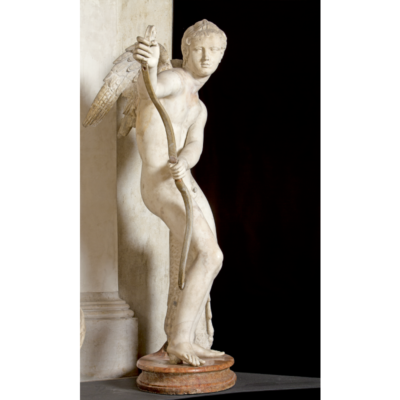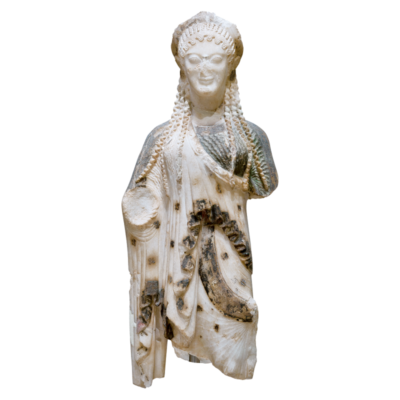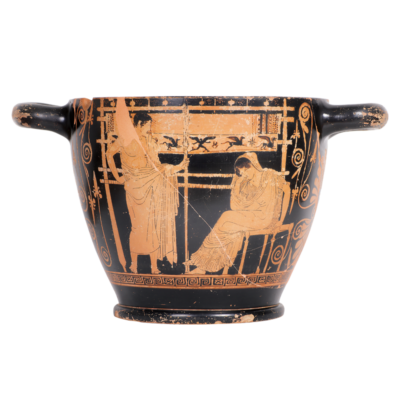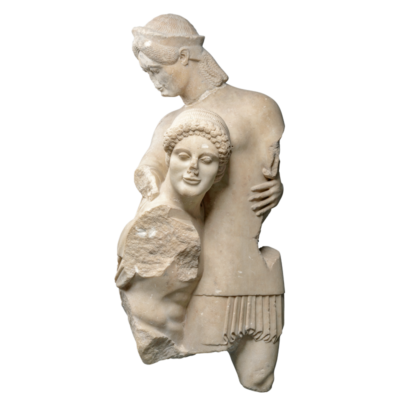Sappho

From Vari in Attica. 440 – 430 BC. Athens, National Archaeological Museum Α 1260.
© Hellenic Ministry of Culture and Sports/National Archaeological Museum/H.O.C.RE. D. Photograph: Costas Xenikakis.
Clay red–figure hydria from the Classical Period, depicting the poet Sappho.
The seated female figure that is concentrated on reading a poem is surrounded by three women who are listening intently. The wreaths at the top of the scene suggest a festive atmosphere, probably related to one of Sappho’s victories in a poetry competition.
Here, greater importance is given to the mind than to the body. This was absolutely revolutionary for the time.
SEARCH & LEARN
• Who was Sappho in antiquity?
• What made her so famous?
THINK
• Poetry competitions were open to both men and women. What does this tell us about Sappho?
DID YOU KNOW THAT…
• Plato was one of the first and most important exponents of kalokagathia (ideal of gentlemanly personal conduct and benevolence).
• Plato was the first to articulate the need for equal education between boys and girls.
• Sappho had the respect of her contemporaries and of people from later generations. To this day, she is considered the first and most important female poet.
TOPIC FOR DISCUSSION
• Although there are many female poets around the world today, in antiquity there were very few of them, and even fewer were widely known. What does that mean?




